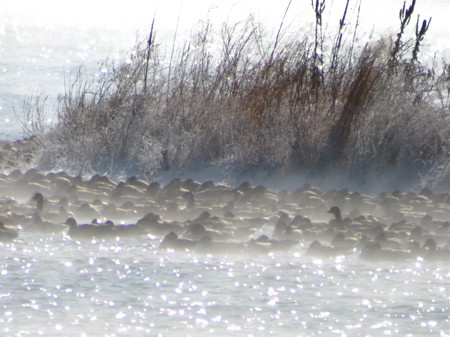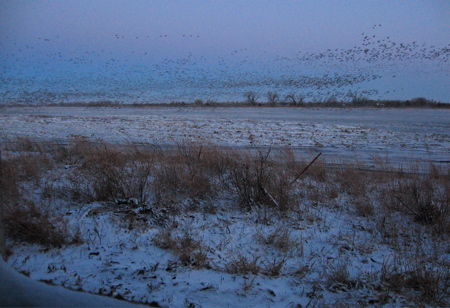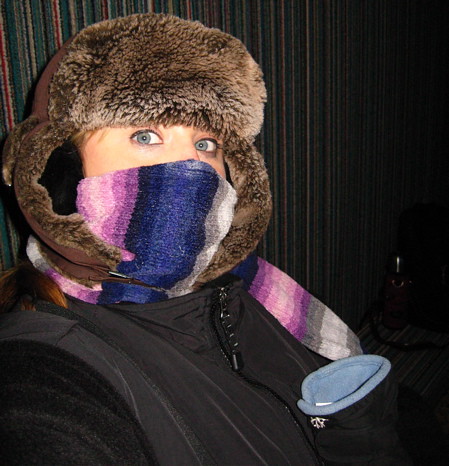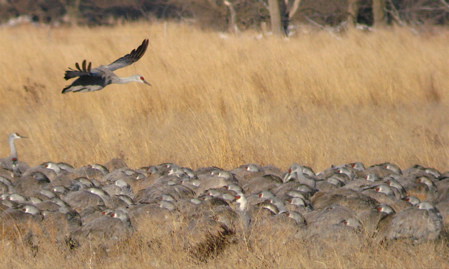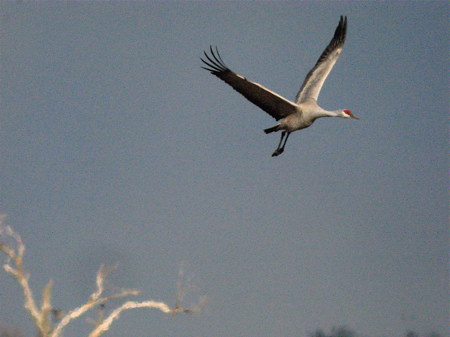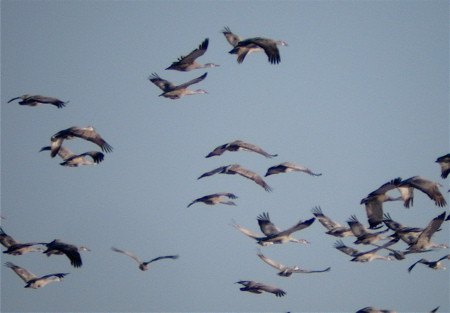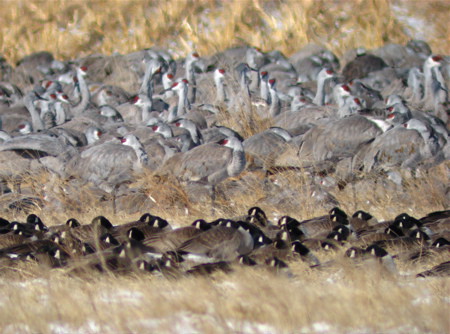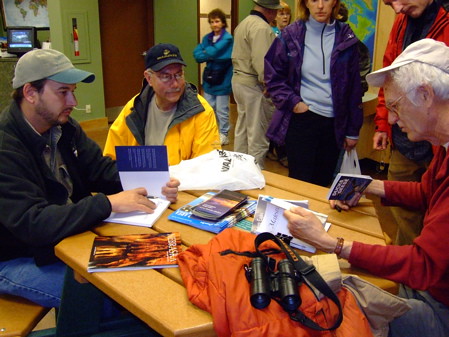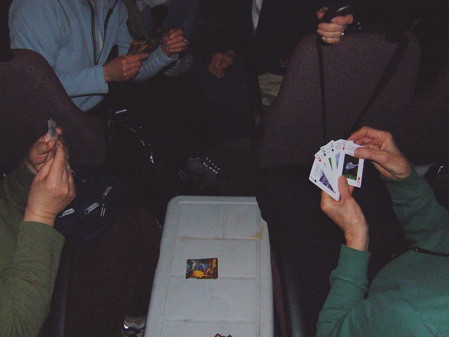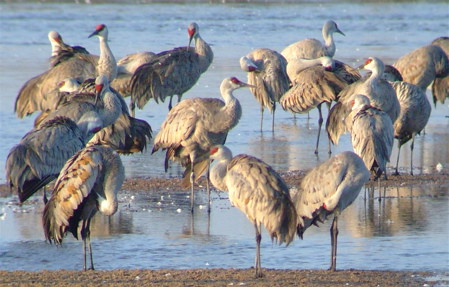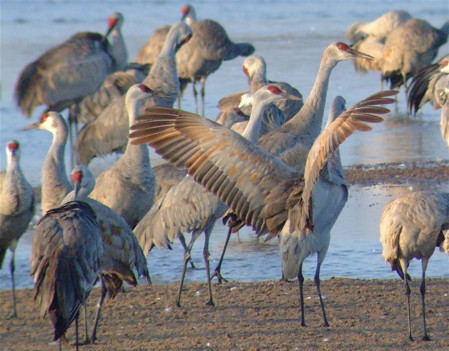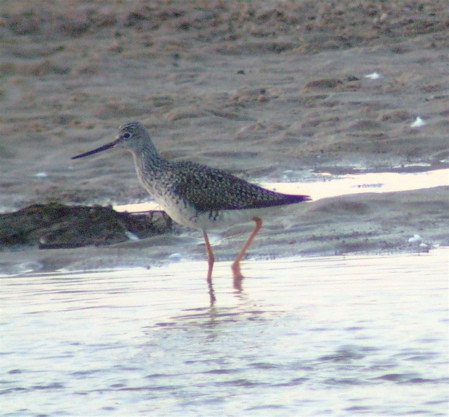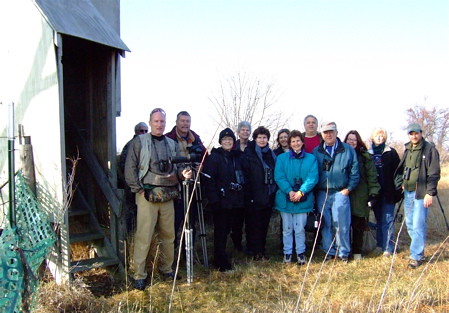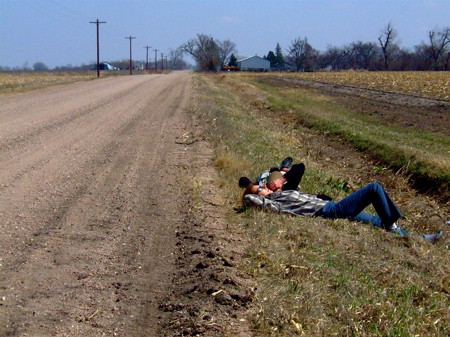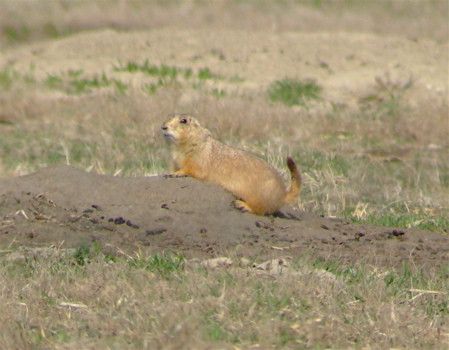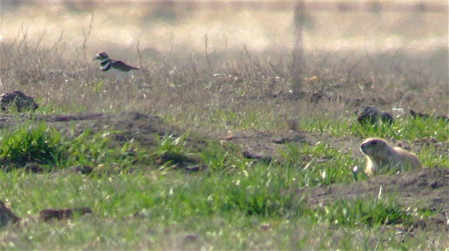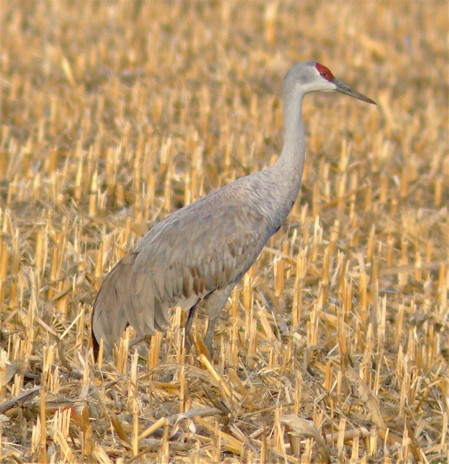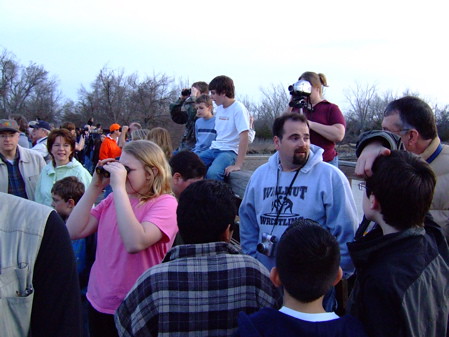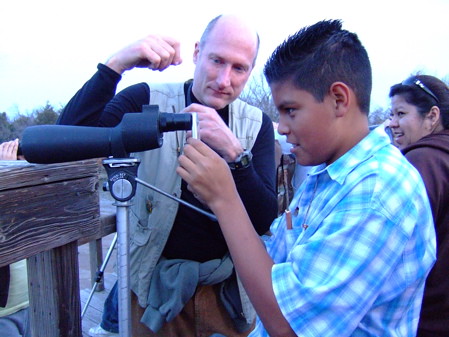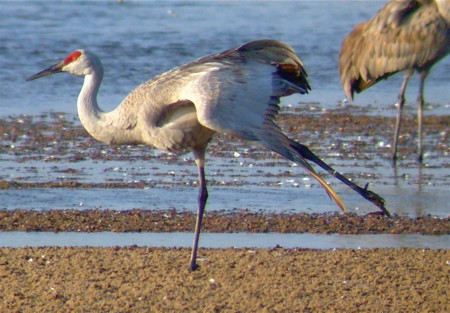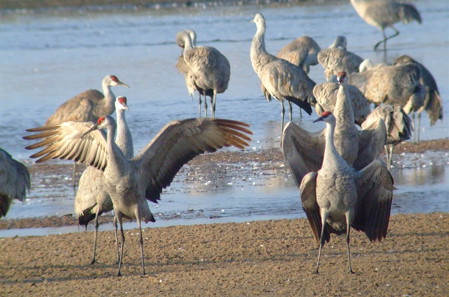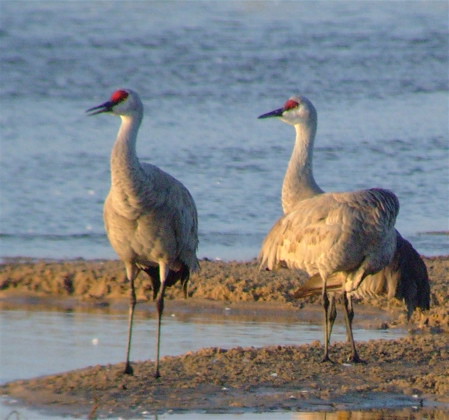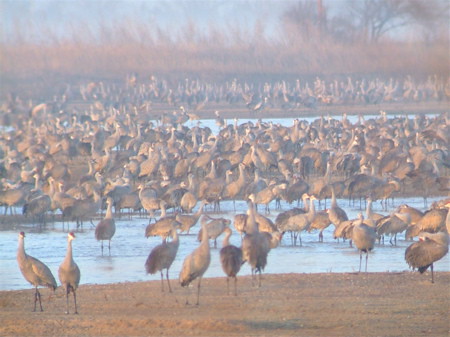Hey! If you need a sandhill crane and or waterfowl fix, the National Geographic Crane Cam live at Rowe Sanctuary is up and running.
You're probably asking yourself, "How much longer is this chick going to go on about Nebraska???" This will be the last post and then later this week I'll be opening up the Olga hive and feeding her some pollen and try and figure out my mojo with the new digiscoping camera at Mr. Neil's bird feeders--I know the new camera is capable of sharply focused photos, that Harlan's hawk doesn't look bad. Perhaps it will get better when I get new glasses?
In an offbeat bit of news, an artist did a rendering of a photo that was on Cute Overload and included a reference to Disapproving Rabbits. I love being combined with one of my favorite websites and sometimes it's weird to think that we coined a phrase that's part of the Internet Lexicon.
One of the fun parts of visiting Nebraska this time of year is watching the cranes fly off of the Platte River from one of the crane blinds at Rowe Sanctuary. The first time I was in one of these was about ten years ago. I had no idea what to expect, we went out in the morning to the giant blind, crammed in with about 30 other people. We were given the lecture to be quiet and not use any flashes so as to not scare off the cranes. We walked out in the cold, you could tell there were quite a few cranes on the river. You stood shivering in the dark, mesmerized by the sheer number of birds. As the skies became lighter you could make out bird shapes and see birds standing on islands and suddenly got an idea of how many thousands of birds were in front of you. Eventually, an eagle would fly over or a coyote run through, frighten the cranes and they would lift off all at once, each individual call merging into a gigantic roar--an overwhelming and powerful experience and something I have tried to come back to every year since.
Over the years, I've found other places to watch the cranes. Rowe Sanctuary can sometimes provide a closer view but really, if you know where to go, you can watch the cranes outside of their blinds. The above photo was taken from the shores of the Platte River on Tom Mangelson's cabin. It's interesting that at Rowe you are given all these rules--don't stomp too hard in the blind, don't stick your camera lenses outside the blind, no talking inside the blind, no lights period on the front of your camera, etc. When we were on the shores of Mangelson's property, we weren't in a blind, we talked (not loud), we walked around (we didn't dance or do jumping jacks) and cranes flew in and landed without any problem. There was even a big bonfire going on not too far from us and if that doesn't disturb the cranes, I don't know what would.
Check out the five young thugs (immature bald eagles) hanging out in a tree at Mangelson's--are they thinking what this eagle was thinking? Don't get me wrong, Rowe's rules are important. You have several people sharing one blind and a person could conceivably stick their arm out of a viewing window and cause an early fly off. I don't know, I think that since I've been coming here so long and know places to stay and watch free, I'm getting spoiled about how I view the cranes and the geese.
It's interesting to see how things are changing at Rowe. Something to keep in mind now when booking time in a blind is that tripods are an issue. In the past when I took field trips to Rowe, I always tried to get a blind just for our group--it's never been a problem before, Rowe has many blinds. This was the first year that I wasn't given a blind just for our group (even with the offer of paying extra). The morning our group arrived for our first blind visit, a volunteer mentioned the blind they had us in had limited space for tripods for a spotting scope or camera--and we were sharing the blind with another group. When they saw how many tripods our group had, they ended up giving us our own blind. However, when we returned for evening crane viewing, we didn't get our own blind and since all the windows were sold, we were told that our tripod legs could not fall into the space of the window of the person next to us or you wold have to put your scope and tripod away. Our group lucked out a little because we had a couple of people cancel last minute and Rowe didn't refund the money so we had some extra windows for space.
I think everybody should visit Rowe Sanctuary at least once in their life and it's a great place to start off if you've never been to Nebraska to see cranes (and you can get some fun crane souvenirs) but I'm starting to see the fun in hanging out on the Fort Kearney Hike and Bike Trail Bridge for crane viewing.
And I end with one final digivideo of sandhill cranes (and some geese) flying over Mangelson's.












